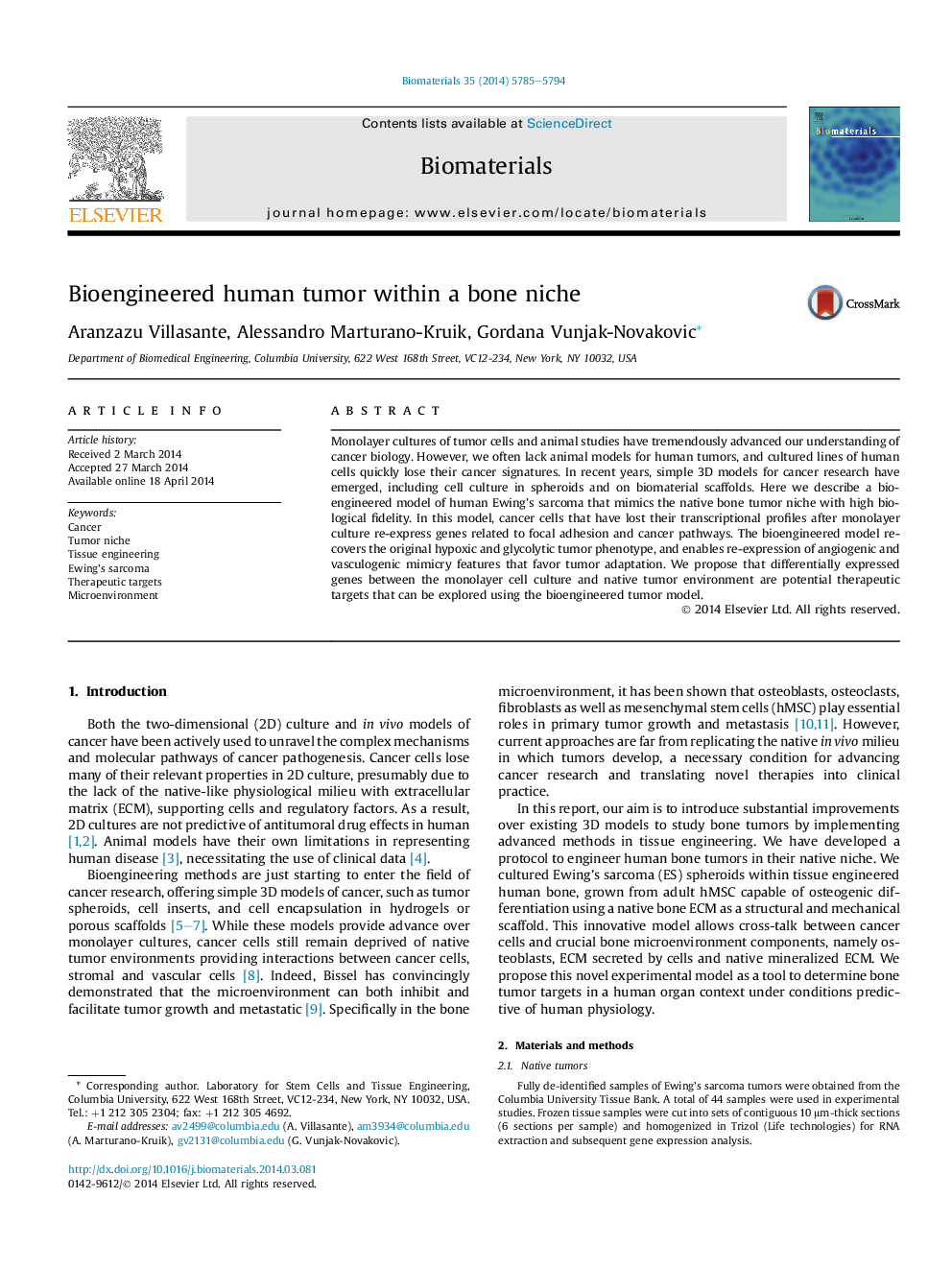| Article ID | Journal | Published Year | Pages | File Type |
|---|---|---|---|---|
| 10227733 | Biomaterials | 2014 | 10 Pages |
Abstract
Monolayer cultures of tumor cells and animal studies have tremendously advanced our understanding of cancer biology. However, we often lack animal models for human tumors, and cultured lines of human cells quickly lose their cancer signatures. In recent years, simple 3D models for cancer research have emerged, including cell culture in spheroids and on biomaterial scaffolds. Here we describe a bioengineered model of human Ewing's sarcoma that mimics the native bone tumor niche with high biological fidelity. In this model, cancer cells that have lost their transcriptional profiles after monolayer culture re-express genes related to focal adhesion and cancer pathways. The bioengineered model recovers the original hypoxic and glycolytic tumor phenotype, and enables re-expression of angiogenic and vasculogenic mimicry features that favor tumor adaptation. We propose that differentially expressed genes between the monolayer cell culture and native tumor environment are potential therapeutic targets that can be explored using the bioengineered tumor model.
Related Topics
Physical Sciences and Engineering
Chemical Engineering
Bioengineering
Authors
Aranzazu Villasante, Alessandro Marturano-Kruik, Gordana Vunjak-Novakovic,
